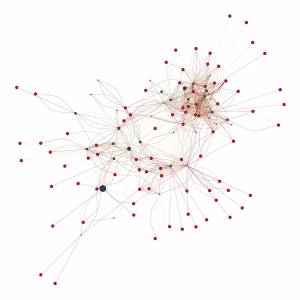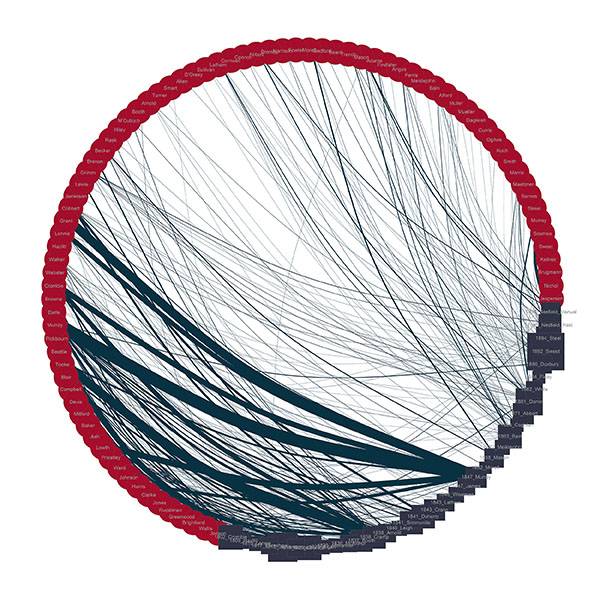A Network of Authors and Grammars (19th-century Pilot Study)
Based on the annotated references to other grammars and grammarians in the corpus texts, we implement a network of authors and grammars. The network shows quantity and quality of the references, i.e. the number of references made to other authors, and the kinds of references. There is, for instance, an essential difference between references that cite other grammarians as authorities and those that criticise the works of others in order to justify their own grammars. Thus, the network reveals the most influential and the most criticised grammarians, as well as isolated works without any visible ties to other grammars or grammarians.
The graphs on the right and below show the network of referenced authors in the 19th century. The green squares mark the corpus texts, the red circles the search terms, i.e. those names of grammarians that were found in the corpus texts. More clearly than the graph on the right, the small-world network below indicates which authors refer to others and which are referenced most frequently (blue lines).
In a second step, we distinguished the different kinds of references so that the networks show whether authors' references are meant positively (e.g. approval of a grammar) or negatively (e.g. criticism). This additional subclassification indicates the authors' standings in the linguistic community, reveals how the scholarly network of authors develops over time, and gives an insight into the mechanisms behind grammar writing. Results of this extended analysis have been presented at both ICAME 2017 and CL 2017.
The subclassification of references will be made visible in the network graphs at a later stage.

